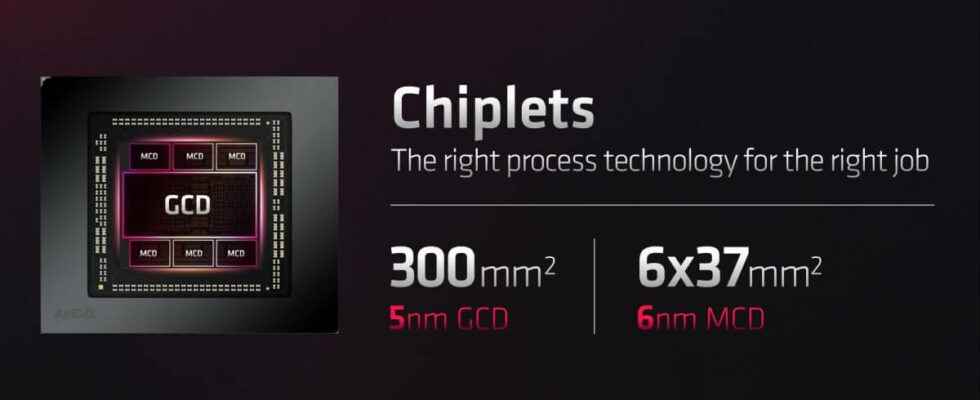AMD today announced the next generation of desktop graphics cards. The company has two new flagship products today. Radeon RX 7900 XTX and RX 7900XTintroduced the .
Based on the new RDNA 3 architecture, AMD’s new 7000 series GPU is the world’s first chiplet-based design. GPU die has two main components, Graphics Compute Die or GCD and Memory Cache Die or MCD. GCD is created using the new 5nm manufacturing process, while MCD uses the older 6nm process.
The move to chiplet-based design allows AMD to mix and match parts for different configurations. It also allows them to use different manufacturing processes for each component. Smaller parts yield better than making a single large monolithic mold, which helps the company manufacture these parts cheaply and efficiently.
Looking at the new GCD, it features new RDNA 3 compute units, new imaging engine and a new binary media engine. Each compute unit has 1.5x VGPR (Vector General Purpose Recording), 64 dual-output stream processors with 2x instruction speed, 2x AI accelerator with 2.7x performance, and 2nd Generation RT accelerator with 50% more performance per CU. The new MCD features a 64-bit memory controller and Gen 2 Infinite Cache for 2.7x the highest memory bandwidth.
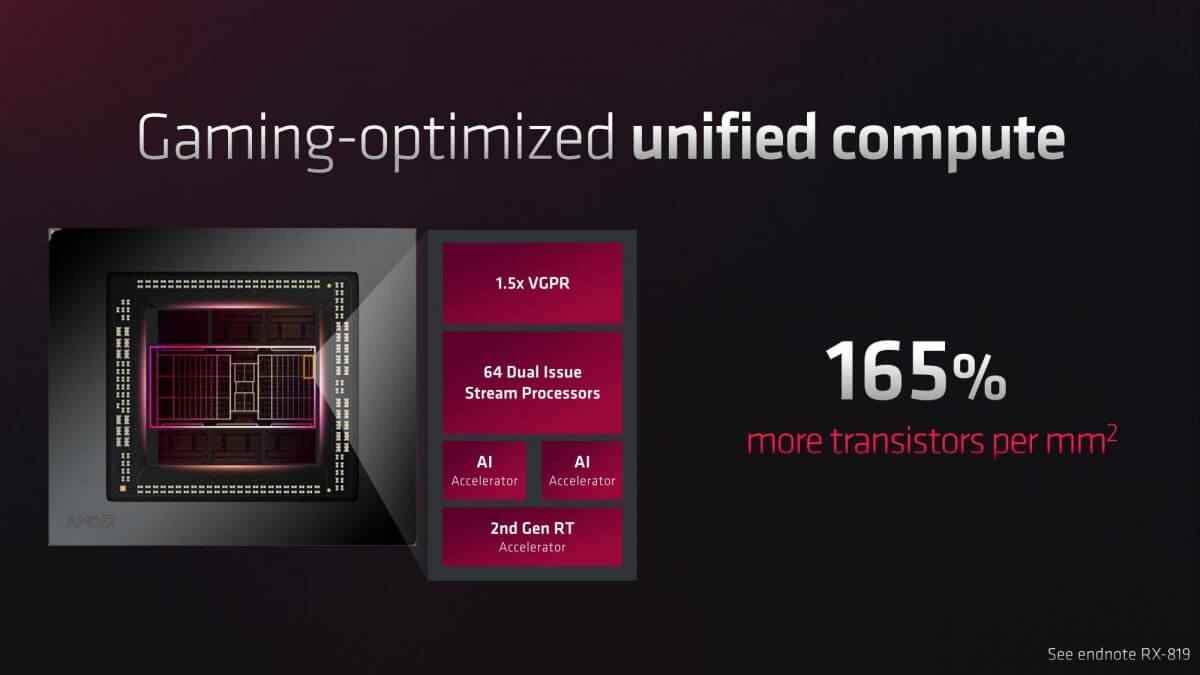
Now as for the cards, the RX 7900 XTX has a 96 processing unit, a 2.3 GHz gaming clock, 24GB of GDDR6 384-bit memory with 96MB of Infinite Cache, and a 355W board power cap that can be powered by two 8-pin connectors.

Meanwhile, the 7900 XT has 84 processing units, a 2.0 GHz gaming clock, 20GB of GDDR6 320-bit memory with 80MB Infinite Cache, and a 300W card power cap.
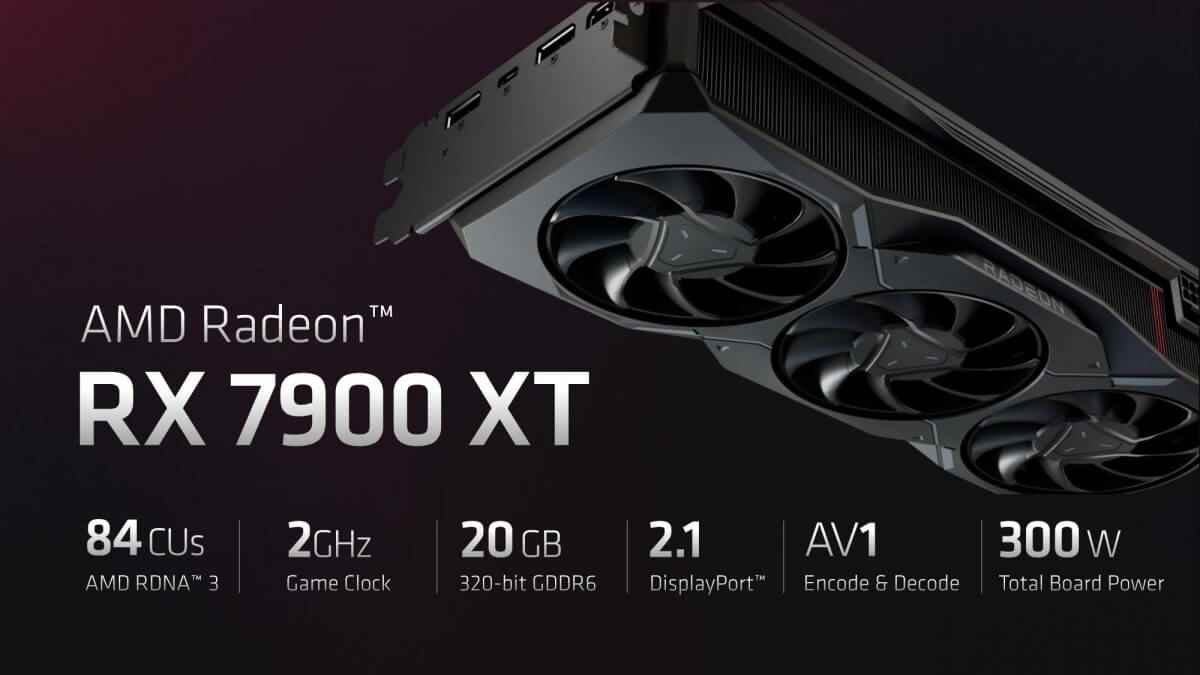
Both cards support the new DisplayPort 2.1 standard, limited to 54Gbps intermediary UHBR 13.5 bandwidth, as well as a new media engine with simultaneous encode/decode and 8K60 AV1 encode/decode for AVC/HEVC.
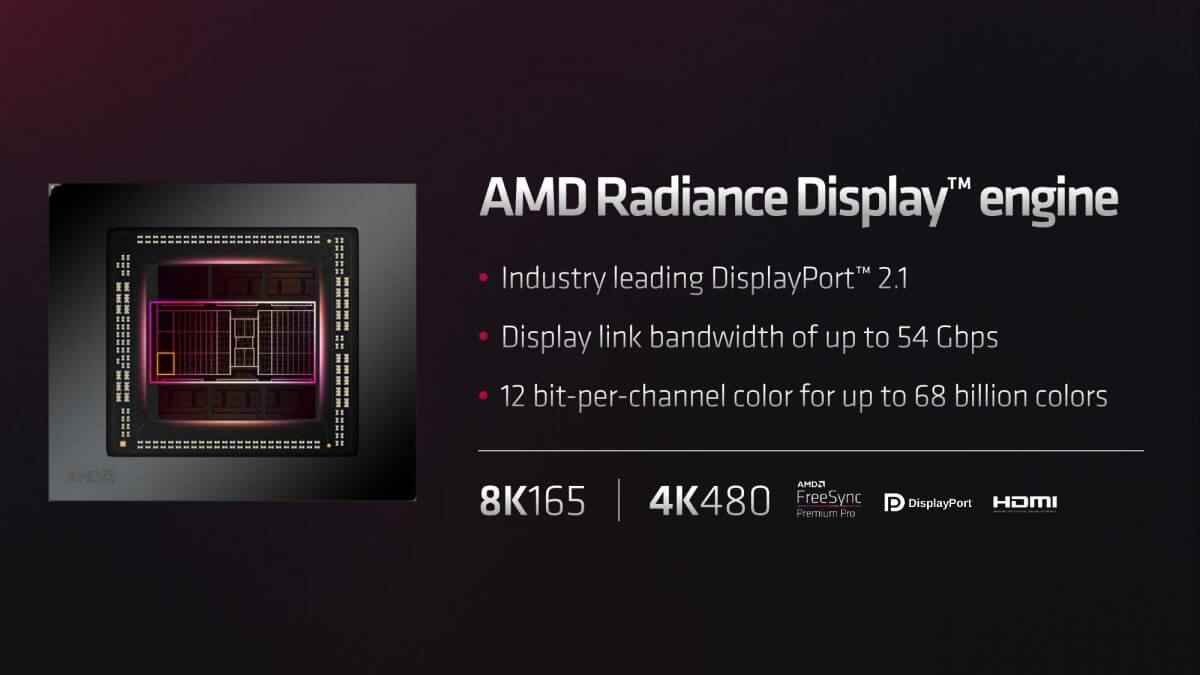
AMD had surprisingly few first-party benchmark scores to show off this time around. The 7900 XTX is claimed to be up to 1.7x faster in pure rasterization and up to 1.6x faster in ray tracing at 4K compared to the 6950 XT. No comparisons were shared against competitors or for the 7900 XT.
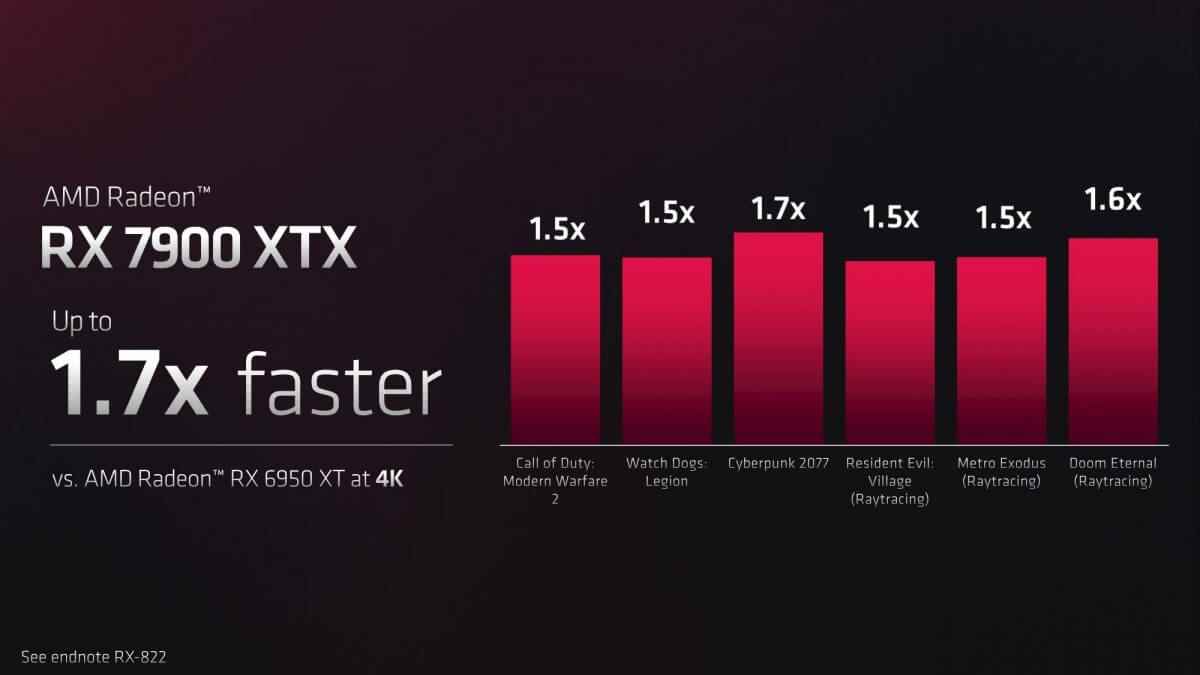
The 7900 XTX is priced at $999 and the 7900 XT at $899. They will go on sale on December 13.
AMD Advantage for Desktops
Building on the success of AMD Advantage notebooks, AMD brings the AMD Advantage framework to desktops, combining premium AMD Ryzen 7950x processors and AMD Radeon RX 7900 XTX graphics cards with AMD Software: Adrenaline Edition technology and features from AMD.
AMD Advantage certified desktops feature certain AMD smart devices that boost performance, including AMD Intelligent Access Memory technology and new AMD SmartAccess Video technology that intelligently splits decoding and encoding workloads between AMD Ryzen processors and AMD Radeon graphics cards by up to 30%. technologies will be included.
AMD Advantage desktops deliver world-class performance, stunning graphics with the AMD Radiance Display Engine, and monitors with supported AMD FreeSync Premium technology. They’re built for gaming and designed to be easily customizable, with high-quality chassis, CPU liquid cooling, minimum 2TB NVMe SSD storage, 32GB or more of DDR5 AMD EXPO memory, 80-plus gold power supplies, and optimized acoustics. .
New AMD Advantage desktop systems are expected to be available soon from leading SI partners including CSL, Cyberpower, eBuyer, Falcon Northwest, Maingear, Origin PC and XIdax.
AMD Radeon RX 7900 Series Product Features
| Model | Calculation Units | GDDR6 | Game Clock | Acceleration Clock | Memory Interface | Infinite Cache | TBP | Price |
| AMD Radeon RX 7900 XTX | 96 | 24GB | 2.3GHz | up to 2.5 GHz | 384 bits | 96MB | 355W | $999 |
| AMD Radeon RX 7900 XT | 84 | 24GB | 2.3GHz | up to 2.4 GHz | 320 bits | 80MB | 300W | $899 |
